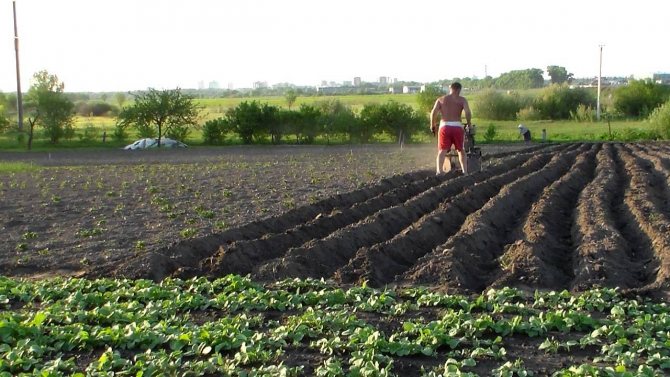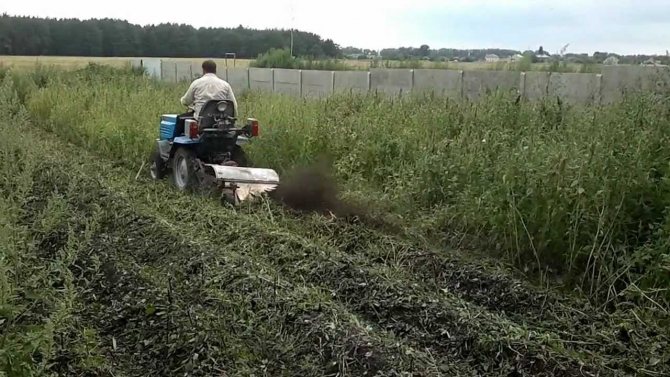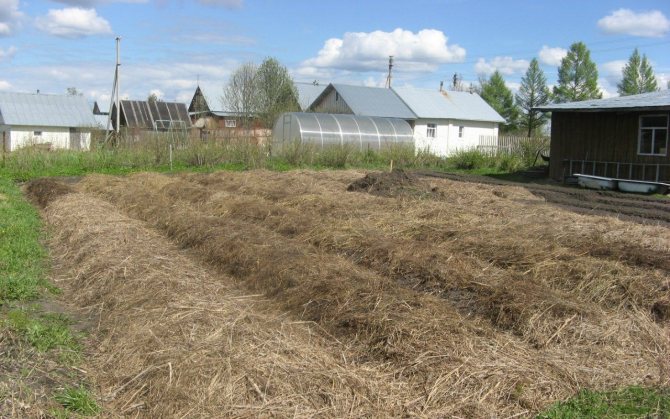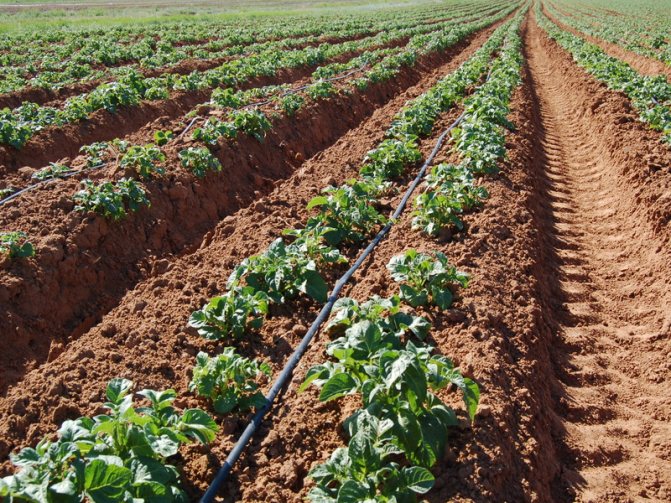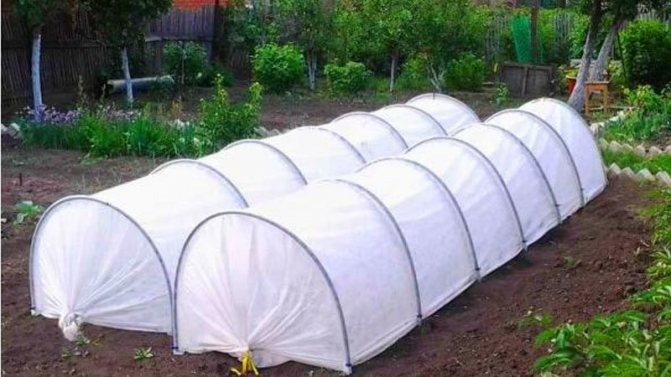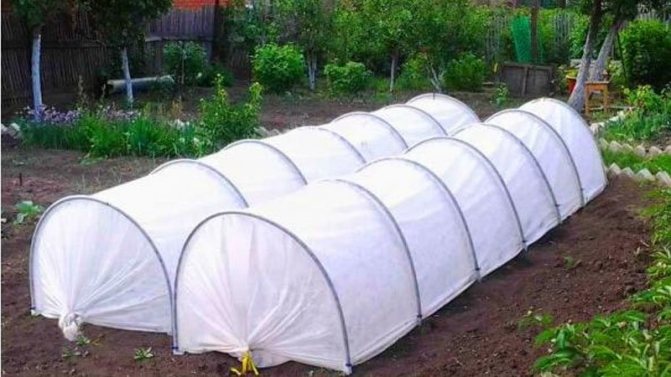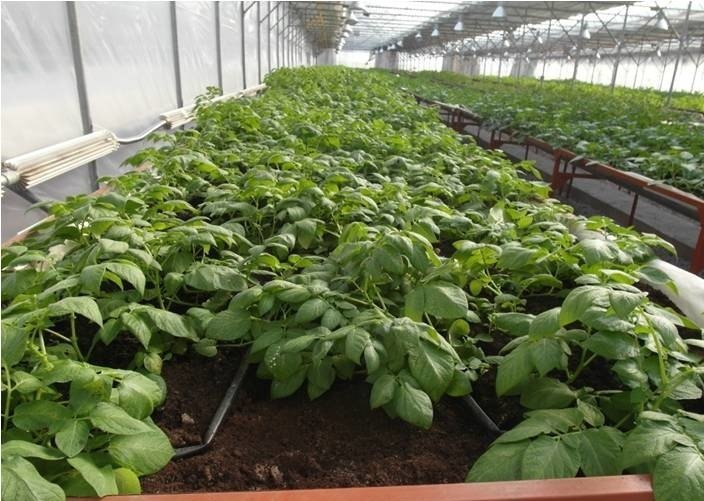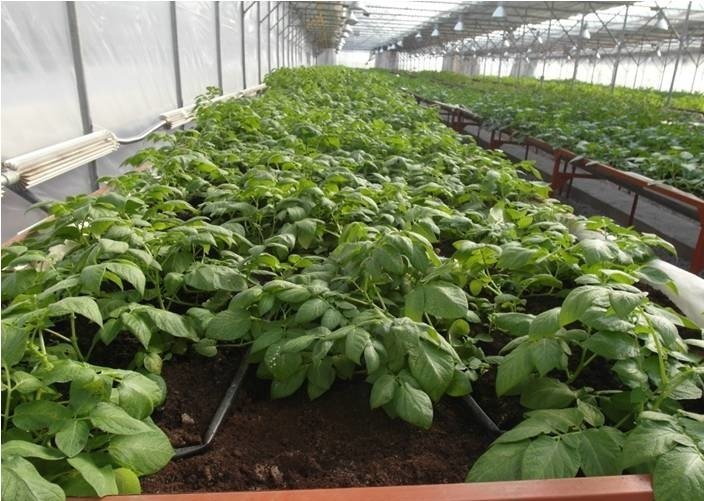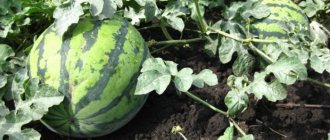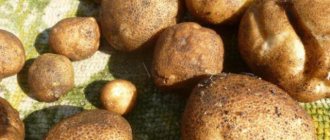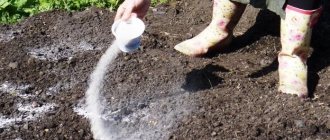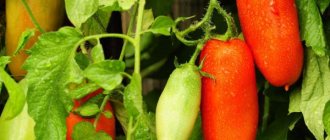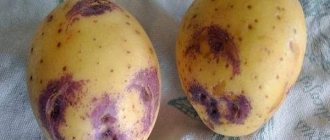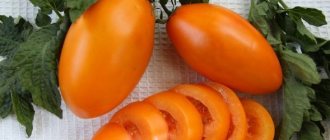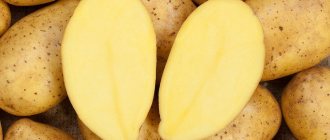The best varieties of potatoes in Siberia
Siberia is a region with a sharply continental climate. There are long winters, short summers, frost in spring, heavy rainfall in late summer and early autumn. Not the most favorable conditions for growing potatoes. Nevertheless, it is the most common vegetable among gardeners. They are constantly trying new methods, looking for new varieties and achieving good results.
For cultivation in Siberian conditions, a zoned variety is suitable, with good resistance to adverse weather conditions.
Gardeners are guided primarily by the potato yield indicator.
The most productive for Siberia
Harvest Siberian varieties - photo
You need to understand that the maximum yields of these varieties can be achieved only if all technological processes are followed and good care.
For growing potatoes in Siberia, it is very important to get the harvest as early as possible, before the onset of cold weather. Therefore, preference is given to early (80–90 days) and medium early (100–115 days) varieties. Late (120-135 days) are not grown in this region - they will not have time to ripen.
The earliest
Early - photo gallery
Early varieties are good in that they give a harvest earlier than various potato diseases begin to develop. But their disadvantage is that they are poorly stored, therefore, for long-term storage, you need to choose medium-late varieties. The longer a potato grows, the higher its yield and flavor characteristics.
Frost-resistant elite
Some elite potato varieties that stand out against the general background not only in color, but also in their early ripening period (60–75 days) and, which is very important, frost resistance, can be safely attributed to the best ones for growing in Siberia.
Cranberry Red (Cranberry Red) - oval red tubers have a pleasant aroma and delicate taste. Potato pulp - with pink tints, does not change color during heat treatment. The tubers are smooth with almost no eyes. Used in any form. The variety is resistant to cold weather.
Crenbury Red is cold resistant
Huckleberry Gold (Huckleberry Gold) is distinguished by lilac fruits with a soft creamy pulp. The taste is peculiar. Only suitable for frying and mashed potatoes. Frost-resistant grade.
Hucklebury Gold - frost-resistant potato variety
Huckleberry is an old known super-elite variety of Canadian breeders, also known as Red Cranberry. The dream of many gardeners with dark red smooth fruits that do not change color during heat treatment. Due to its cold resistance, it is grown in Siberia, the Moscow region and the Urals.
Hucklebury - the dream of the gardeners of the Urals and Siberia
These varieties were bred for cultivation in Alaska, so they are perfect for Siberia.
Planting potatoes in Siberia usually begins in May. In Western Siberia - at the beginning, and in Eastern Siberia - in the middle of the month. This is due to the fact that the climate in the western part is slightly milder. Here, delaying the planting of potatoes for one or two weeks, you risk half of the harvest. Therefore, you need to plant on time. Someone is guided by folk signs - they are waiting for the buds to bloom on the trees. Someone is checking the lunar calendar. But the most important and correct landmark is the soil warmed up at a depth of 10 cm to +9 degrees.
Growing
Growing potatoes consists of the same stages as in other regions: choosing a place for planting, preparing the soil, preparing seed material, planting, leaving, harvesting.
For growing potatoes, a sunny, level place is definitely determined, without freely walking drafts. It is best if cabbage, carrots or cucumbers grew on the site before it. It is not recommended to grow potatoes in the same place for several years.
The soil is prepared in the fall - fertilizers are applied for digging: manure, peat, humus or mineral fertilizers. In the spring, the soil is fertilized again, dug up and potato planting begins. In Siberia, only sprouted tubers should be planted. To do this, in the spring, at the end of March - early April, the tubers are taken out of storage, the largest and healthiest ones are selected, and they begin to prepare them for planting. For two weeks they are kept in a bright, warm room (+18 degrees), laid out on a flat surface in one layer, periodically turning them over. Then they are transferred to boxes covered with newspaper and kept until sowing in a well-lit warm place (+15 degrees). Thus, by the beginning of May, the tubers will already have strong sprouts. The process of warming up and germinating potatoes usually takes about a month.
It is best to plant several varieties at the same time: different ripening periods and different taste characteristics - you never know which variety will give a good harvest this year.
There are several ways of planting potatoes:
- traditional - rows are made at a distance of 70 cm from each other, in a row the distance between tubers is 30 cm. When hilling, the root system of the plant is damaged.
- tape - there is an alternation: 2 rows at a distance of 30 cm, then two rows at a distance of 110 cm from each other. Very good reviews from gardeners.
- ridge - tubers are laid in formed ridges about 30 cm high at a distance of 30 cm from each other. The distance between rows with ridges is 70–90 cm. Suitable for areas with high humidity and areas with high groundwater. On dry soils, potatoes in the ridges often die.
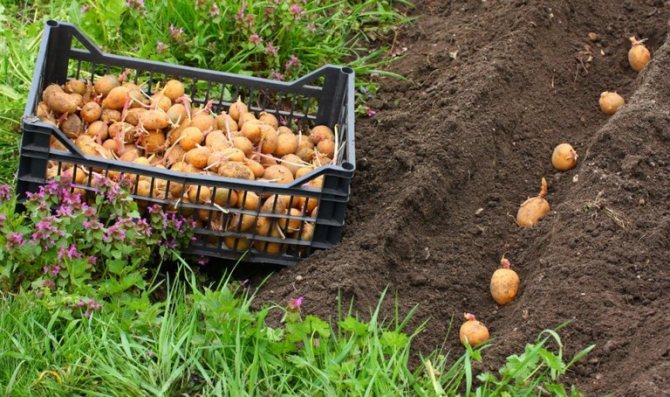
Potatoes are planted only in warm soil.
The basic rules for planting and caring for potatoes are simple:
- The planting depth of potatoes varies from 6 to 15 cm, depending on the type of soil and the size of the tubers.
- To obtain high yields, it is important to observe the planting scheme - 30 * 65 cm. With more frequent plantings, the plants interfere with each other and form tubers poorly.
- Fertilizers are applied to the hole in the form of ash, onion or garlic husks.
- To get rid of weeds, you need to loosen the soil twice: before the first shoots appear and when the plants rise 15 cm.
- Water the potatoes at least three times during the entire growing period: immediately, after germination, at the beginning and at the end of flowering.
- Drying of the tops is a sign of the ripeness of the potato. Two weeks before harvesting, the tops are mowed, thereby allowing the tubers to ripen and the skin to thicken.
Description of culture
Potatoes are a perennial tuberous plant of the Solanaceae family. The number of shoots in a bush varies, depending on the variety and care, from 4 to 10. Leaves are dark green, located on short petioles. The flowers are small, usually white, but also pink and purple.
The outer part of the tuber consists of cork tissue. All over the surface there are depressions called eyes. New plants develop from them. From a tuber immersed in the ground, shoots diverge, reaching a height of up to 0.5 m.
Depending on the variety, the peel of the potato can be yellow, pink, purple, brown. Tubers also differ in shape, weight, color and taste of the pulp.
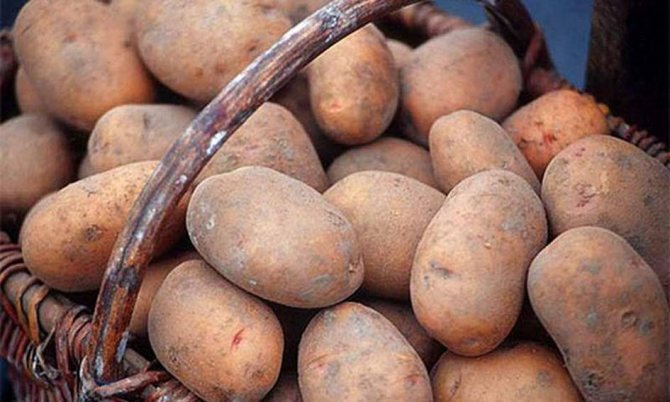

Potatoes
How to get a high yield
You can get a high yield of potatoes in Siberia in different ways.
Growing in a greenhouse
For cultivation in a greenhouse, tubers begin to be prepared as early as November.When sprouts appear, the potatoes are transferred to boxes with wet sawdust or peat, and taken out to a heated greenhouse. When the time comes for planting, the tubers will already have strong sprouts and roots. The holes are dug out according to the scheme 70 * 25 cm, 8 cm deep. A layer of peat or humus must be laid on the bottom, tubers on top, and all this is sprinkled with a layer of earth. There is no need to water the plantings, otherwise you will create an excess of moisture and the tubers will rot. When seedlings appear and the soil dries up, then you can water the potatoes for the first time. During the period of growth, flowering and formation of tubers, the humidity in the greenhouse should be at least 80-100 percent. The air temperature must be maintained at about +23 degrees. During the period of mass formation of tubers, it should be slightly lowered to +19 degrees. The yield in the greenhouse reaches 350 kg per hundred square meters, and it is not exposed to diseases and pest attacks. Ideal for growing potatoes.
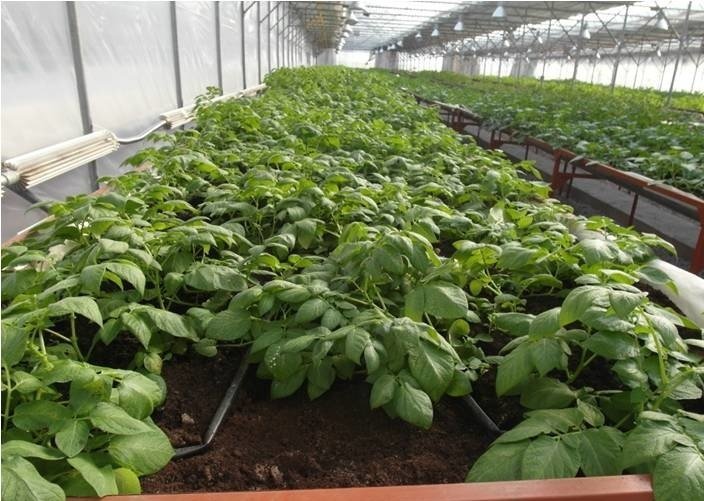

A greenhouse is an ideal place for growing potatoes
If your greenhouse is occupied by tomatoes, cucumbers or other crops, and there is absolutely no room for potatoes in it, creating a greenhouse will help you. Plant the potatoes in the beds, set the arches, stretch the film, pressing it to the ground and the greenhouse is ready. The film retains heat well, but does not allow air to pass through. Therefore, in good weather, it will need to be opened for airing, weeding, watering and feeding the plants. The greenhouse must be closed at night. Thanks to the created conditions, you will get the harvest ahead of time.
Read also: Picasso Potatoes: description
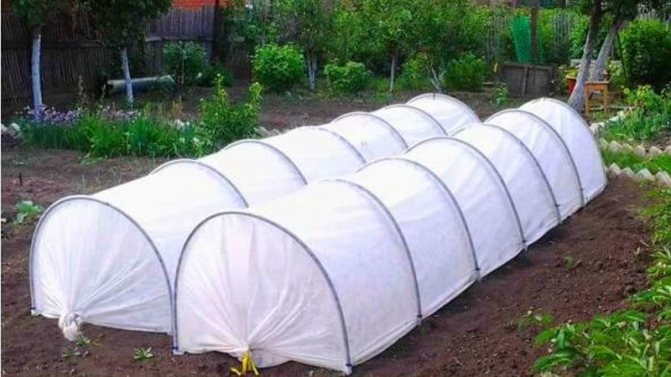

The greenhouse retains heat well
High beds
Since the soil in Siberia heats up for a very long time, you can apply the method of growing potatoes in high beds. Since autumn, they are formed with a height of about half a meter with the help of hay, soil and manure. In these beds, potatoes can be planted earlier than in open ground for two weeks. To accelerate the heating of the soil, the following method is often used: spill with abundant hot water and cover with a film. After the ground warms up, tubers are laid in it. It is better to cover planting before the frost leaves.
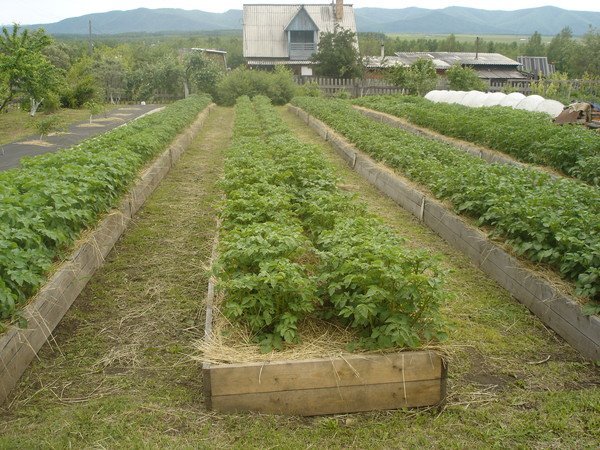

Tall beds allow you to plant potatoes earlier
Chinese method
The essence of the Chinese method is as follows: in the fall, you need to dig a trench 50 cm deep, make three holes 70 * 70 cm in it, about half a meter deep, at a distance of 25 cm from each other. At the bottom of the pit, organic matter is placed in the form of grass, leaves, food waste, hay, and ash (2-3 glasses) is added.
In the spring, when the soil warms up to +7 degrees, half a bucket of humus is poured onto the bottom of each pit, three potatoes are laid and sprinkled with 10 cm of earth. Before planting, the potatoes are prepared: a cross-section is made in the middle of the tuber, so that an untouched jumper 1 cm wide remains in the center. The plantings look like a trench with mounds that must be mulched with straw.
As the potatoes grow, it will be necessary to periodically fill up the soil and fertilize with bird droppings diluted in water, in a ratio of 20: 1, respectively. Water the trenches - as the soil dries up, in hot periods - at least 1 time per week.
When the trench is completely filled with earth, you need to let the plant rise to a height of 30 cm, then bend it to the ground, dig in and tear off the lower leaves. As they grow, the bushes continue to be covered with earth and sprayed, the flowers are removed.
When planting potatoes at the end of April, in July, you can harvest the first crop: up to 16 tubers weighing 1.7 kg from one mound. By autumn, the yield rises to 24 kg from one planted tuber.
Is there any fear of canning the seedlings grown for so long?
Yes, of course, I'm very afraid to preserve my own potato seedlings, but the measures taken for warming for the day and at night make it calmer, especially since the seedlings are already quite hardened by growing in a greenhouse.Since March 17, when the temperatures were minus 17 and the gusty winds, it has been growing in a heated greenhouse. For two weeks the coming harvest is in the coldest place. I think that's enough of the scribble, I'll go and cook the pea seeds. In parallel with the potatoes, peas will be planted with seeds in the aisles, at the same time we will taste fresh peas early. Is it really bad?
Yielding potato varieties for Siberia
Siberia is a northern region with a rather difficult climate. Everything is possible in it: sudden spring or autumn frosts, intense heat in July, heavy rains in August - and this is not the whole list of weather surprises in this region. Such a Siberian climate seems very harsh to many vegetable crops. But this is not a reason not to plant anything. It's just that for growing in such difficult climatic conditions, it is necessary to select more resistant varieties that can withstand such a climate. In this article we will look at potatoes, or rather, the best potato varieties for Siberia.
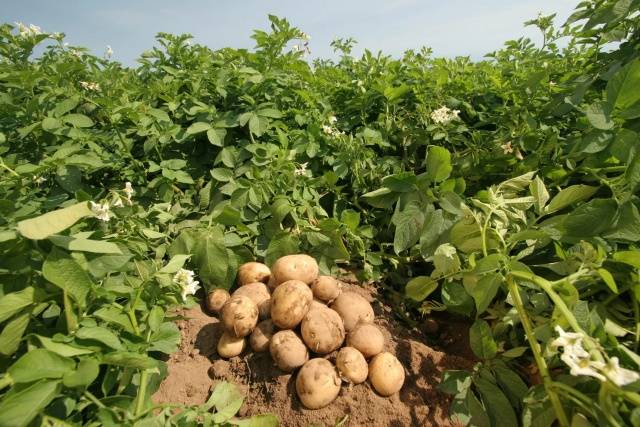

The timing of planting potatoes in Siberia
Siberia occupies a fairly large area: it will make up about 57% of the entire territory of Russia. All Siberia can be conditionally divided into the Western and Eastern regions. The climatic conditions in them are slightly different, which means that the timing of planting potatoes is also different.
The eastern regions are distinguished by their harsh, long winters and short but very hot summers. It is in these regions that the weather has a wayward character: frosts, uneven precipitation, most of which falls in late summer or early autumn. Considering all these factors, the timing of planting potatoes in this region begins in mid-May, when the weather stabilizes a little.
But the western regions were a little more fortunate. Their climate is a little milder, so you can plant potatoes in the West of Siberia in early May.
According to these folk landmarks, potatoes can be planted only after the first buds begin to bloom on the birch.
Preparatory work on the site
In order to rid the soil of weeds and pests during the winter, it is necessary dig up her in the fall. You need to dig deep, on a full bayonet of a shovel. In the process, it is advisable to take out all the rhizomes of the weeds, find and destroy the larvae of the May beetle, wireworm.
After digging, there should be no hollows on the site so that during the rain water does not accumulate in them, causing potatoes to rot. Manure introduced for digging should not remain at the top, otherwise it will dry out and lose its properties.
Organic fertilizers promote the growth of potatoes, but they decompose slowly, so they are not used at the beginning of potato growth. To provide the culture with useful substances at the beginning of its growth, mineral fertilizers are used, such as superphosphate, potassium sulfate, ammonium nitrate, wood ash.
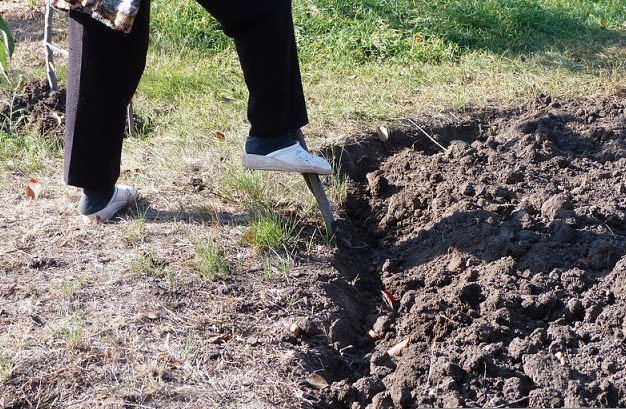

Did you know? Potatoes are unique for their compatibility with other products and lend themselves to all methods of heat treatment. From a unique tuber, you can cook more than two thousand not only first and second courses, but also desserts.
Potato varieties for Siberia
Despite such a harsh climate, quite a few varieties of potatoes can be grown in Siberia. The State Register of Breeding Achievements of the Russian Federation allows planting 53 different varieties of potatoes in the Siberian climate. In addition to these varieties of Russian selection, in the climatic conditions of Siberia, some Dutch, Ukrainian and German varieties can also be planted. Below we will arrive at a description of the very best of them, grouped by:
Most Popular
For several years these varieties have been occupying leading positions in cultivation in the vastness of Siberia.
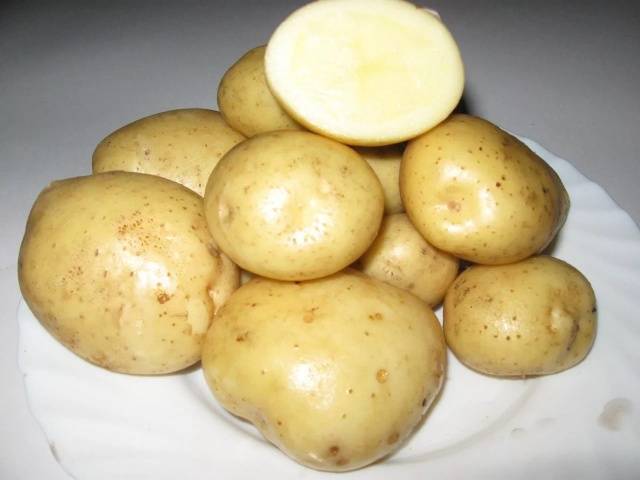

This German potato variety is perfect for growing in our Siberia. It has an average ripening period, so it makes no sense to dig in the potatoes before 60 days. The bushes of Adretta's potatoes are more compact than those of the varieties of our selection, but they are often not worth planting.
This table variety with smooth yellow tubers has earned its popularity for its excellent taste. Small potatoes with an average weight of 100–150 grams are perfect for boiling and roasting. Their light yellow pulp keeps its shape perfectly, and the starch content in it will not exceed 17%.
But Adretta is famous not only for her taste. Her bushes and root crops are not at all afraid of potato crayfish and stem nematodes. In addition, they are not susceptible to late blight.
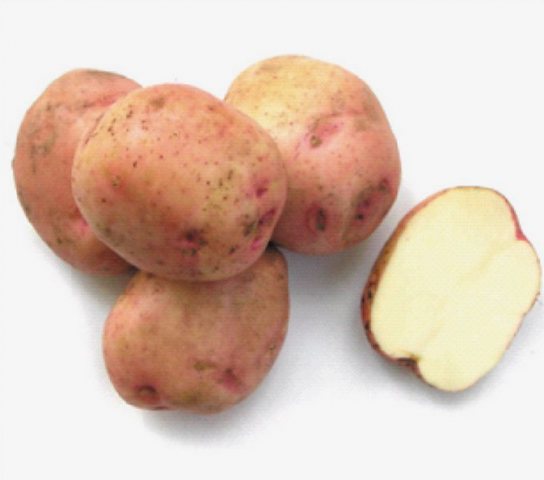

Potatoes of this variety will ripen quite early - within 70–75 days from the moment of germination. Alena's potato bushes are quite sprawling, so when planting, you should adhere to the 60x35 cm scheme.
Alena potatoes have a smooth red surface with small eyes. It is not very large. Most often, its weight will be no more than 150 grams. She has good marketability and taste. The white pulp of this variety contains 15-17% starch. Alena is perfect not only for frying and mashed potatoes, but also for making French fries.
This potato variety is distinguished by its high and stable yield. In addition, it is immune to the most common potato diseases and has excellent drought tolerance. It is also important that Alena's potatoes can be harvested mechanically, which means that it is suitable for growing on an industrial scale.
Zhukovsky early
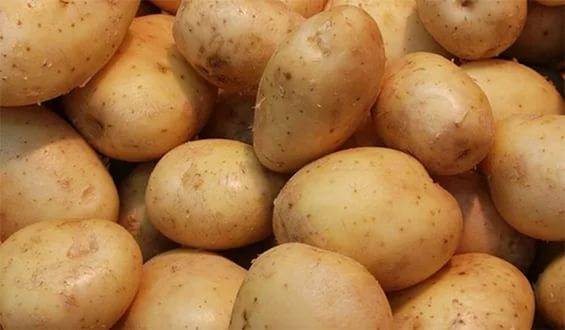

This early-ripening table variety can be started to undermine on the 50th day from germination. He has rather large, strongly branched bushes. The smooth surface of the early Zhukovsky potatoes can be painted pink or red. The weight characteristic of the variety will be between 122 and 167 grams.
Many gardeners fell in love with Zhukovsky early potatoes due to its white pulp, which does not darken after cutting. The starch content in it will be from 10 to 15%. The excellent taste and commercial qualities of this potato variety are complemented by good resistance to potato crayfish and nematode.
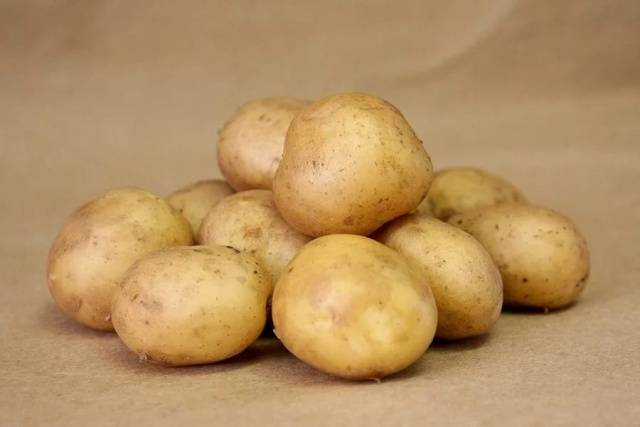

This early variety of table potatoes has earned its popularity due to its excellent taste. Its tubers, which can be dug in after 55 days from the first shoots, have a thin and very smooth skin. On its light beige rounded surface, small and rare eyes will be visible. Weight parameters of potatoes will be 100-130 grams. The starch in the white pulp of Luck will not exceed 15%.
Luck potatoes are extremely drought tolerant, which is why they are often used for growing in large areas. In addition, the variety has good resistance to viruses and late blight, but can be attacked by common scab.
The most productive
In the harsh weather conditions of Siberia, not many varieties can boast of high yields, even if such is laid down in them at the selection level. Below we will consider 5 varieties, the productivity of which is not afraid even of the harsh Siberian climate.
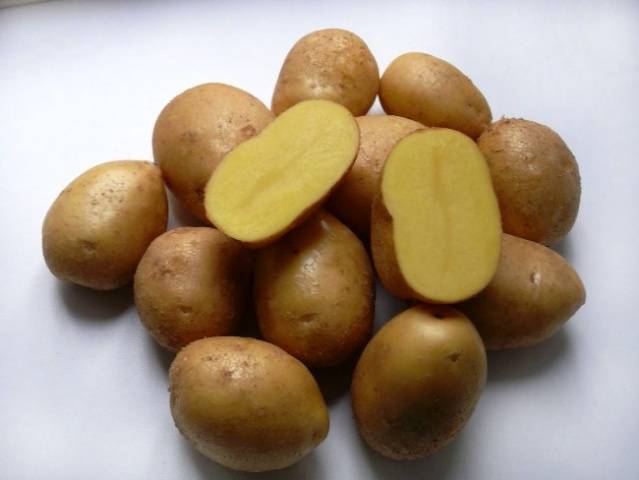

This Dutch potato variety in the vastness of Siberia shows simply incredible results: up to 360 centners per hectare of land. The first crop of tubers under the tall and dense bushes of the Impala will ripen within a month and a half after planting.
Like all early varieties, the Impala does not boast large tubers. Their weight will be between 80 and 150 grams. But this does not affect its taste and marketability in any way. The surface of Impala potatoes is smooth and yellow. Small eyes are expressed on it, and light yellow flesh is hidden under it. The starch in the pulp will be about 15%.
Impala is one of those varieties that are resistant to all types of nematodes. But at the same time, it can be affected by late blight and rhizoctonia.
Read also: Potatoes: the best siderates for planting in spring, which siderates to plant after
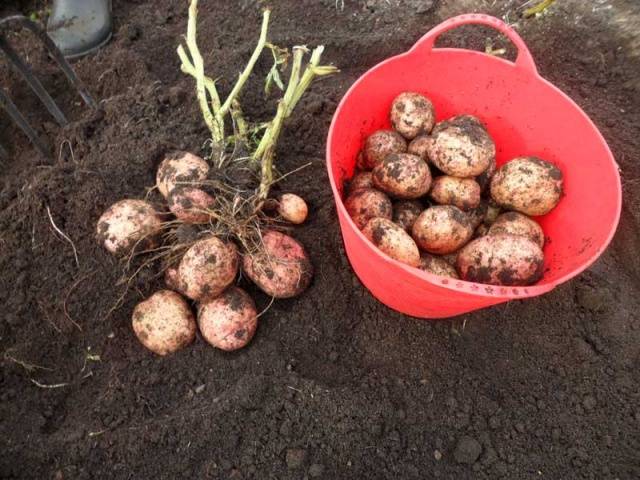

Lugovskiy variety of table potatoes is a pearl of selection in Ukraine. It is actively grown throughout Russia, including Siberia.
The first crop of Lugovsky potatoes can be harvested in 75 days from germination. Its tubers are not so large in size, and their weight will be about 85-125 grams. Lugovsky's rind is smooth to the touch. There are small eyes on its light pink surface.
The white flesh of these small potatoes has a high starch content of about 19%. The taste and consumer characteristics of this variety are excellent. In addition to the standard resistance to blackleg, scab and potato crayfish, Lugovskoy has resistance to late blight. But in front of some viruses, he can pass.
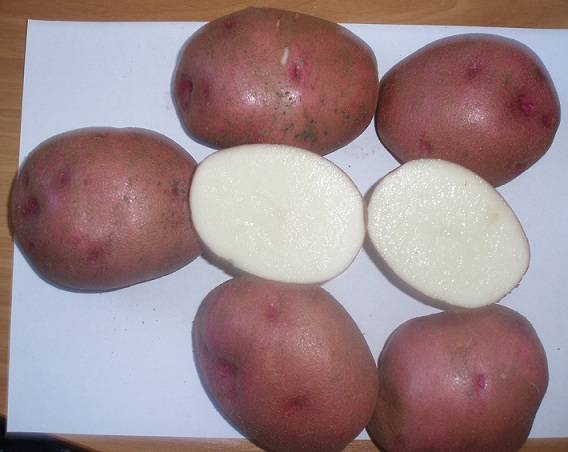

When grown in the climatic conditions of Siberia, the Lyubava potato variety shows almost record yields. When grown commercially, this variety will yield between 288 and 400 centners per hectare of land.
Potatoes Lyubava can be attributed to early ripening varieties, the fruiting of which occurs in 65–70 days. Tubers of this variety have a rather rough red skin, on which eyes of medium depth are visible. The mass of one potato will be 109-210 grams.
Lyubava potatoes have good taste characteristics and a very high keeping quality. The starch in its pulp will be between 11 and 17%.
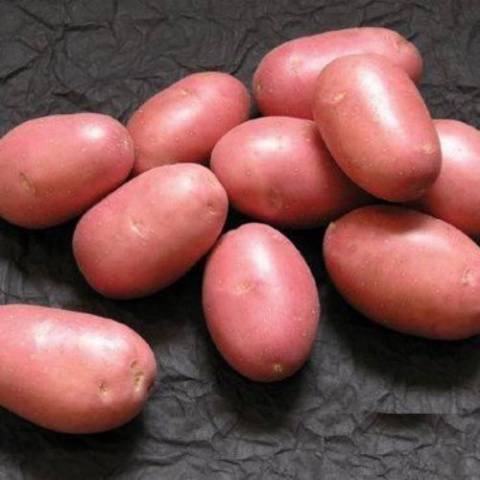

An early ripe table potato variety that shows itself perfectly when grown in Siberia. When landing in May, you can dig it up in late June - early July.
Scarlet tubers have a smooth red skin with small eyes. The average weight of potatoes will be 80–150 grams. Scarlet pulp is yellowish in color. The starch in it is at an average level, not exceeding 15%.
Scarlet has good resistance to potato cancer and tuber late blight.
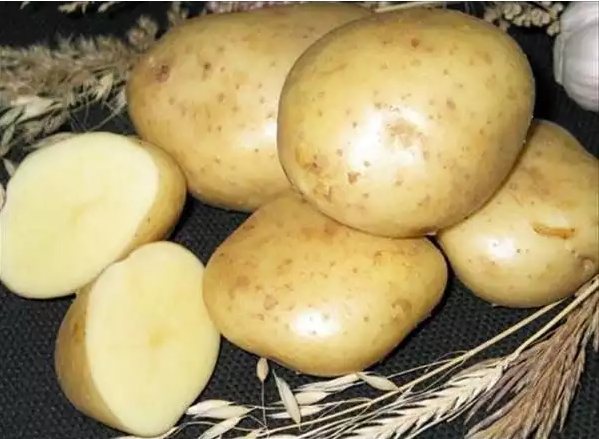

Finnish high-yielding potato variety with early ripening periods of 60 to 70 days. With the early harvesting of Timo's potatoes, you can get up to 240 centners per hectare, and with the late harvest, even more - about 320.
Timo has small, neat, rounded tubers. Most often, their weight does not exceed 100 grams, but potatoes weighing 120 grams can also come across. On the smooth skin of Timo, eyes of medium depth are distinctly expressed. The skin itself, as well as the pulp hidden behind it, are light yellow in color. The starch content of Timo's pulp will be about 12-14%.
The disease resistance of this potato variety is not as good as its taste. Timo will not get cancer of potatoes, but he can easily pick up late blight and scab.
All considered varieties show excellent results when planting in this climatically difficult region. But when growing them, it is worth remembering that planting potatoes in Siberia is different from planting in more favorable territories. Therefore, before disembarking, we recommend that you familiarize yourself with the video:
In addition, the reviews of people who have already planted it can help in choosing a variety of potatoes for Siberia. We will present some of them below.
"Zhukovsky early"
Potatoes of the "Zhukovsky Early" variety can boast of a ripening period: literally 55-60 days after the day of planting, they are ready for consumption. However, this does not affect the size of the tubers, because they can weigh up to 170 g. The flesh of the Zhukovsky early potato is creamy. The variety has good immunity. Potatoes can be used for mashed potatoes and fries.
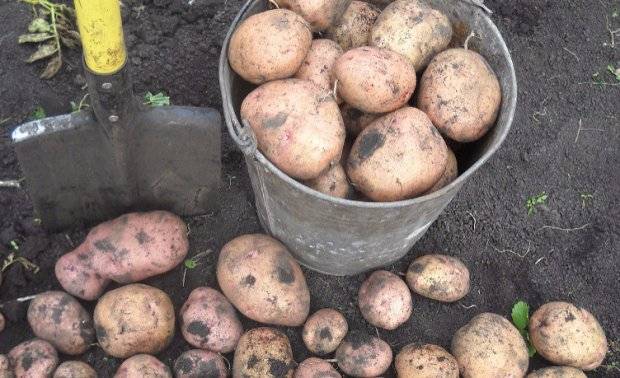

Did you know? "Zhukovsky early" does not darken when cutting, is not afraid of damage and is resistant to drought.
The best potato varieties for Siberia: making the right choice
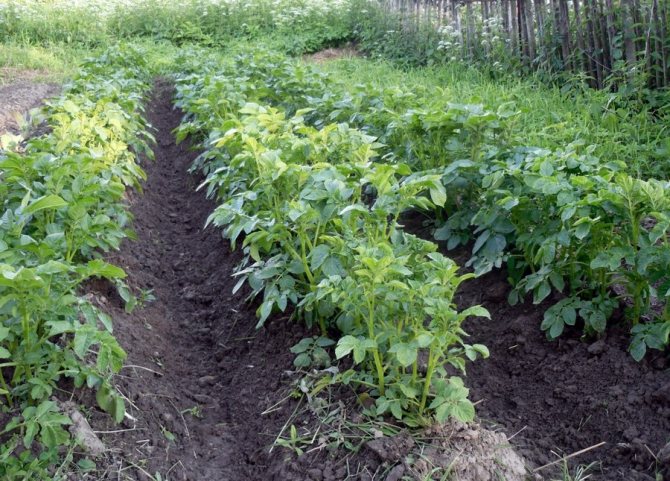

At the mention of Siberia, many people have a stable picture of a harsh winter and endless taiga expanses, buried in snow. Meanwhile, Siberia is large: in the north of the region, there is almost no summer; in eastern Siberia, the temperature in summer does not rise more than fifteen degrees; in western Siberia, in the summer months, the thermometer shows at times thirty degrees and above. Here they grow their own cucumbers, tomatoes, zucchini and, of course, potatoes.
Characteristics of the best potato varieties for Siberia
If we consider western Siberia as more favorable for growing potatoes, then the climate here is continental. In addition to the Altai ridge, which protects from Kazakh winds, the presence of the Vasyugan swamps affects the weather in this area. They smooth out the temperature differences typical for the continental climate. Snow usually falls in November. At the same time, recurrent spring frosts and early autumn frosts are not uncommon, which makes the results of the work of the cultivators unpredictable. Summers in eastern Siberia are sunny but short. Little rain falls. The warmest months are July and August, the temperature reaches 15 o C. Snow falls in October. And although the conditions for growing potatoes in Siberia can hardly be called favorable, some gardeners manage to grow more than one crop.
Video about the second Siberian harvest
High-yielding varieties
The potatoes grown in Siberia must be productive. Moreover, it is desirable that the tubers were formed together. The variety should be early (55–65 days), mid-early (65–80) or mid-ripening (80–100), since late varieties that reach commercial maturity after this period may not ripen in the Siberian summer. Tubers should be as resistant to temperature changes and lack of moisture as possible, as well as be resistant to pathogens of potato diseases.
Despite the peculiarities of the climate, more than fifty varieties of potatoes are grown in Siberia. The most widespread are:
Alena is a domestic selection of potatoes. The maximum yield for this variety is 391 c / ha. Ripens early. Thanks to its qualities, it has not lost its relevance for more than thirty years.
Everything is beautiful in this potato - from a bush with noble purple flowers to red tubers. The share of starch in root crops reaches 15-17%. It is used for making delicate mashed potatoes and frying.
Alena's susceptibility to late blight and golden nematode is more than compensated for by her resistance to cancer, scab, and rhizoctonia. The choice of this variety in Siberia is also influenced by drought resistance.
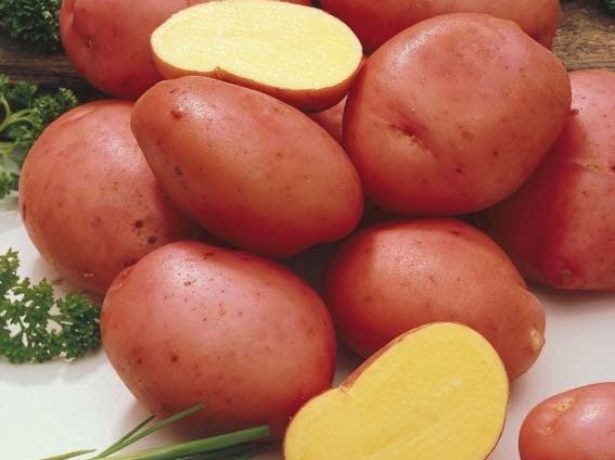

Alena potatoes are fruitful and reliable
Adretta - received by German breeders, and showed itself perfectly in Siberia. Grows in tall, straight bushes. During the flowering period, it is covered with delicate white flowers. Harvest up to 450 c / ha is harvested 65–80 days after the first friendly shoots.
Tubers are medium, yellow, contain up to 18% starch. The taste is great. Used in cooking and making chips. Keeping quality is good.
The advantages of Adretta include the fact that the bush forms quickly and forms tubers early, this ensures high productivity. And its excellent taste, cancer resistance and relative resistance to viruses make Adretta the preferred variety for gardeners in Siberia. According to reviews, this potato is grateful for fertilization and loosening, calmly tolerates drought, does not react to excessive moisture during prolonged rains.
Disadvantages: susceptibility to late blight, scab and rhizoctonia, can be eliminated with proper care and prevention.
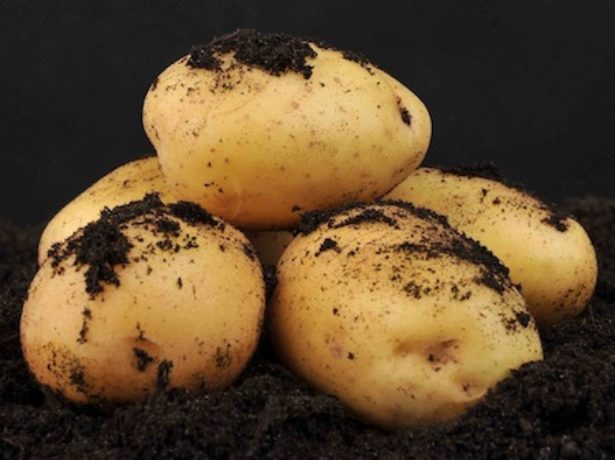

German potatoes Adrett took root in Siberia
Zhukovsky early is a domestic, high-yielding potato variety. Its advantages have ensured the spread of the Zhukovsky early variety practically throughout the entire territory of Russia over the past twenty-five years. Potatoes ripen 60–70 days after sprouting.
Root crops do not grow to large sizes. The tubers are pink. The white pulp of potatoes contains only 10–12% starch. The taste is good, does not boil over, is used for frying and in the production of chips.
The variety is undemanding to care, it tolerates drought and cold equally calmly. Thanks to the dense skin, the tubers are stored for a long time.
Advantages of the variety: early maturity, yield, resistance to potato cancer, golden cyst nematode.
The disadvantage is susceptibility to late blight, which is eliminated by providing preventive measures and regular crop rotation.


Unpretentious and productive potatoes Zhukovsky early
Lugovskoy is a recognized variety of Ukrainian selection, created more than thirty years ago. Due to its unpretentiousness, reliability and excellent taste, it is widespread in all regions of Russia. The first young potatoes can be obtained two and a half months after germination. Fully ripens three months after the first seedlings. The maximum yield of Lugovsky reaches 514 kg / ha. Bushes with erect tops, small. Inflorescences are white.
The weight of tubers does not exceed 85–125 g. The root crops are oval in shape, with a light pink skin. The pulp is white. Starch content 12–19%. The taste is pleasant. The variety is well transported and stored.
Lugovskoy potatoes are valued for their stable yield, excellent taste, and resistance to potato cancer. Shows medium resistance to other diseases.
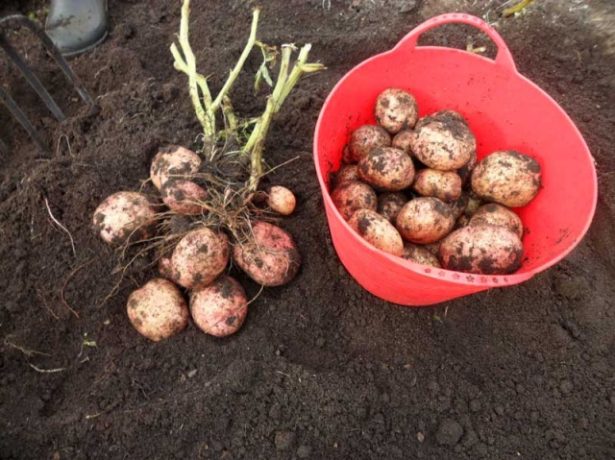

Lugovskoy potatoes taste good and disease resistant
The Lyubava potatoes have been widely known for no more than fifteen years. This is the result of the work of domestic breeders who have created a variety exclusively for Siberia, the Urals and the Far East. The variety is early, ripens within 60–70 days, pleases with its yield (290–400 c / ha). Forms tubers amicably. You can harvest young potatoes one and a half months after the first shoots appear. With good care, the yield of the variety reaches 524 c / ha. Tubers are smooth, medium or medium-large, and are characterized by excellent commercial qualities. The pulp contains up to 17% starch. The taste of the potatoes is excellent. Due to the dense peel, Lyubava potatoes are not susceptible to mechanical injury, they tolerate transportation and storage well.
Read also: Frozen potatoes in the freezer at home, is it possible
Lyubava is resistant to potato cancer. The disadvantages of the variety include susceptibility to nematode and late blight of the tops. But if the crop rotation is observed, losses from these diseases can be reduced to a minimum.
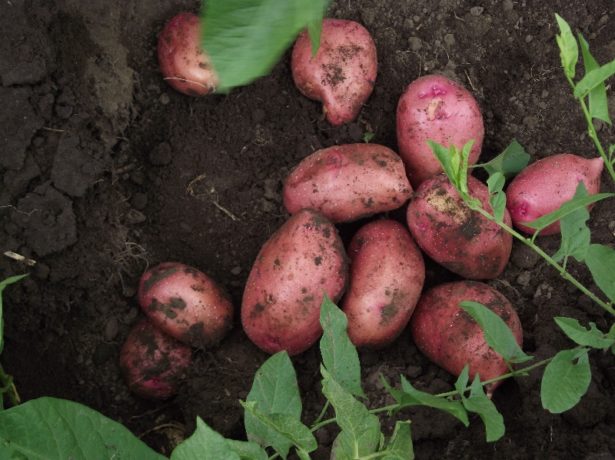

Lyubava potatoes are tasty and perfectly stored
Good luck - early maturing, high-yielding (300-500 kg / ha), domestic potatoes. Although Siberia is not listed in the regions of access for this variety in the State Register, they know and grow Good Luck here. Young potatoes are dug after 45 days. Marketable maturity occurs within 50-60 days after the first shoots appear.
There are almost no trifles in the nests. Tubers are large, light beige, weighing 120–250 g. The white pulp of root crops contains 12–15% starch. The taste is good, suitable for preparing any dishes.
Gardeners note the resistance of potatoes to drought, therefore they are planted in large areas. In addition, potatoes are moderately susceptible to late blight.
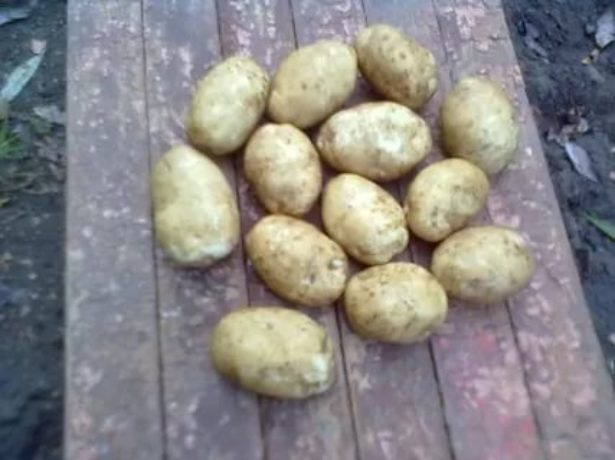

Potatoes Good luck for the field and summer cottages
The presented popular varieties of potatoes, in addition to yield, have other positive properties. All of them, with the exception of Lugovoy, ripen early, have a certain resistance to diseases and are well stored. It is impossible to select priority varieties, guided by any one merit - too wasteful. And yet there are several more early varieties that are not as productive as those listed, but also found adherents in Siberia.
Earliest varieties
Of the early varieties recommended for cultivation in the Siberian region, the following stand out in popularity:
- Antonina
- Baron
- Meteor
- Rosara
- Red Scarlett
- Sante
- Timo Hankkiyan (Timo)
Antonina is a domestic early variety. Ripens in two months. An average of 211 to 300 centners are harvested per hectare, although there are more than 400 centners / ha. The tubers are yellow and rough to the touch. The pulp is light yellow. Starch content reaches 19.4%. Pleasant taste and high starch content make it possible to cook any dish from this potato. It has a long shelf life, is resistant to cancer and is moderately susceptible to other diseases.
Baron is a domestic early (up to 65 days) variety.Produces up to 237 centners of potatoes per hectare. Bushes are tall. Tubers are yellow, oval, smooth. The pulp is colored light yellow. The mass of tubers is within 110–193 g. Starch content is 13.4–14.8%. The taste and keeping quality are good. The Baron is resistant to almost all diseases except scab.
Meteor is a domestic early variety (up to 55 days). By the 45th day, it produces 213 centners of potatoes per hectare. On average, up to 404 quintals of potatoes are harvested. Tubers are smooth, oval-round, yellow. Weight ranges from 100 to 147 g. Light yellow pulp contains up to 15% starch. Potatoes taste good and have a long shelf life. Meteor shows resistance to cancer, late blight, nematode, moderate resistance to viruses.
Rosara is a wonderful early (55–65 days) variety created by domestic breeders. Rosara shows the maximum yield in the central regions, but it feels great almost throughout Russia. The tubers are medium in size and weight. The peel is smooth, red. The pulp is colored yellow. Rosara's tubers taste great. The variety is resistant to cancer, nematode, almost not affected by late blight and scab.
Red Scarlett is an early domestic variety with an original name. Young potatoes are dug after 45 days. Full maturity occurs approximately two months after germination. It is not the most productive, only 160-200 c / ha. Tubers are medium-sized, oblong, colored red. The flesh has a pleasant yellow color. The starch content is 10-15.6%. The taste of Red Scarlett is inferior to other varieties, but it is exceptionally well (98%) stored and resistant to many potato diseases.
Sante is a medium early (65–80 days) potato that came from Holland. Widely distributed in the regions of Russia. Gives a high yield. Tubers are yellow in color, with light yellow flesh and excellent taste, are used for the industrial production of French fries. Sante is resistant to almost all diseases. Stores well.
Timo is a variety from Finland. Siberia is not formally included in the access region for this variety, but Timo is grown because of its early (60–70 days) ripening time and the ability to produce an excellent harvest (in the Northern region, up to 282 kg / ha were harvested). The tubers are yellow, oval-round. The eyes are shallow. The color of the pulp is yellow. It contains little starch, up to 14.2%. Does not boil over. Lies well.
The peculiarity of Timo is that he, not possessing high resistance to late blight, manages to form tubers and ripen before being struck by the disease.
The best early varieties of Siberian potatoes - photo gallery
"Nevsky"
"Nevsky" is a mid-early table potato. This species refers to ecology without any special frills and in most cases does not lose yield indicators. It is for this reason that it is widely grown in Russia. By growing these potatoes, you are assured of a good harvest. White large tubers are dotted with pink eyes. The flesh of the potato is white. Dense consistency allows it to be used for making French fries.
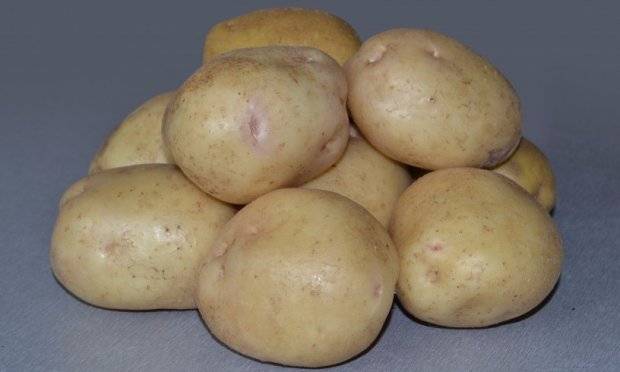

Planting potatoes in Siberia, terms
The wayward climate of Siberia dictates the timing of planting potatoes. In Western Siberia with a milder climate, planting is started most often in early May. Longer winters and recurrent spring frosts are typical for Eastern Siberia, and therefore potato planting here begins later, around mid-May. Some gardeners, guided by folk signs, associate the beginning of planting with budding on birches. Fortunately, potatoes have a rather long period from planting to first shoots. The risk of killing seedlings by frost is not as high as the likelihood of planting tubers in frozen immature soil. The soil for planting is ready, provided that it has warmed up to 6-7 ° C at a depth of at least ten centimeters. At lower temperatures, only germinated tubers are planted. Mature soil is not lumpy, crumbles, providing the germinating roots with a sufficient amount of oxygen.
Growing features
Abundant summer rains are not very typical for Siberia; summers in these places are often short and dry. For this reason, the ridge planting method is practically not used here. Unless there is high groundwater in a specific place.
To get a good potato crop, it is important to provide:
- inter-row cultivation
- weed control
- loosening the soil
- hilling bushes.
In Siberia, like any other place, potatoes respond gratefully to leaving. One has only to carefully choose potatoes in terms of ripening and yield, as well as ensure crop rotation.
Outdoor cultivation technology
Potatoes are planted in the open field in the usual linear way with an interval between holes of 35 cm and a row spacing of 65–70 cm. You can plant it under a shovel or make a furrow first, and then plant the tubers. The bushes are oriented from north to south in order to provide better illumination, due to which powerful tops are formed and photosynthesis takes place more intensively.
But this has always been done. Now many in Siberia are trying new planting methods, for example, under straw.
Planting potatoes under straw in Siberia
In the comments to the video it is written:
The potatoes were laid out on the soil (without digging), a little humus was added, a bit immediately spud and covered with leaf litter and straw from a deciduous forest. Did not weed and did not huddle. Result!
baradac1
video caption
Ways to grow a high yield
To improve the conditions for the growth of potatoes in Siberia, a trench planting method is used. A gardener from the Irkutsk region tells in detail Yuri Leskov tells in great detail how to prepare trenches for planting potatoes.
Store with salt
I take the potatoes to the garage and keep them there, not letting them into the cellar, for 2 weeks.
- I pre-process the cellar with a sulfur checker 2 times. I carefully lay out the nets with potatoes on wooden pallets.
- Even in the cellar, I place the containers with salt. It removes excess moisture from the air.
- The temperature in the cellar in winter is 2-4 ° C, the potatoes are stored perfectly.
Any agricultural technique works only when all actions are performed exactly. Therefore, I advise you to follow my recommendations, otherwise the desired result will not be achieved. I wish you a good harvest!

